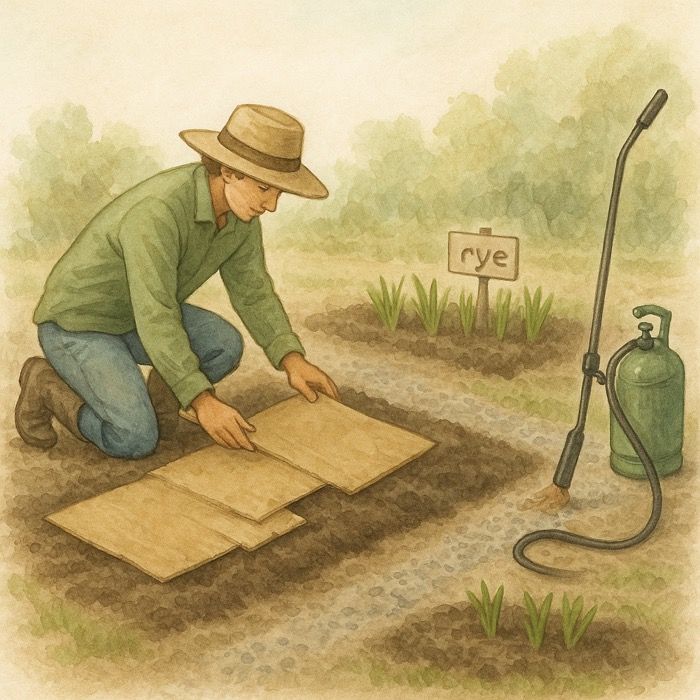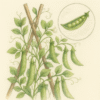The Gardener’s Guide to Drip Irrigation Systems for Gardens & Raised Beds
Are you looking to revolutionize and automate your gardening watering? If you want a water-efficient, cost-effective, and hassle-free way to keep your garden flourishing, a drip irrigation system for your garden and raised beds is the perfect solution. In this guide, we’ll explore the benefits, setup process, and maintenance tips for drip irrigation systems, ensuring your garden thrives year-round.
What is a Drip Irrigation System?
A drip irrigation system is an innovative and efficient method of watering plants that delivers water directly to the root zone of each plant. Unlike traditional irrigation methods, which can be wasteful and less targeted, drip irrigation uses a network of tubes, pipes, and emitters to distribute water slowly and evenly. This minimizes water wastage and ensures that plants receive the precise amount of moisture they need to thrive.
Components of a Drip Irrigation System
Understanding the various components of a drip irrigation system can help you appreciate how it works and how to set it up for your garden:
- Main Line – This is the primary hose or tubing that connects to your water source. It serves as the backbone of your system, distributing water to the secondary lines.
- Secondary Lines – These smaller tubes branch off from the main line and run alongside or between your plants, directing water to specific areas.
- Emitters – These are small devices attached to the secondary lines that control the flow of water to the plants. Emitters can be adjustable to provide different flow rates, ensuring each plant gets the right amount of water.
- Pressure Regulator – Ensures that water pressure remains consistent and at a level suitable for the system, preventing damage to the tubing and emitters.
- Filter – Helps to remove debris and particles from the water, which can clog emitters and reduce the efficiency of the system.
- Connectors and End Caps – Used to join tubing sections and close off the ends of lines to prevent water from escaping.
You can watch our video on Drip Irrigation Components for more info.
How Drip Irrigation Works
Drip irrigation works on the principle of slow, steady water delivery. Here’s a step-by-step breakdown of how it functions:
- Water Source Connection – The main line connects to your water source, typically a garden hose or faucet.
- Pressure Regulation and Filtration – As water enters the system, it passes through a pressure regulator to ensure it flows at an optimal rate. It then goes through a filter to remove any debris.
- Water Distribution – Water travels through the main line and is distributed to secondary lines running alongside your plants.
- Water Delivery – Emitters along the secondary lines release water slowly and directly to the root zone of each plant. The flow rate can be adjusted based on the needs of different plants.
- Evaporation and Runoff Reduction – Because water is delivered directly to the roots, evaporation and runoff are minimized, making the system highly efficient.
Types of Emitters
Emitters are a critical component of the drip irrigation system, and there are several types to choose from based on your garden’s needs:
- Drip Emitters – These provide a slow, steady drip of water directly to the base of the plant. They are ideal for individual plants or small areas.
- Micro Sprayers – These emit a fine spray of water, covering a larger area. They are suitable for densely planted areas where multiple plants need watering.
- Bubblers – Bubblers release a higher volume of water and are used for larger plants or trees.
- Soaker Hoses – These hoses are porous and allow water to seep out along their entire length, making them perfect for rows of plants or raised beds.
Advantages of Using Drip Irrigation
Drip irrigation systems offer numerous benefits, making them a preferred choice for both amateur and professional gardeners:
- Precision Watering – Delivers water directly to the root zone, reducing wastage and ensuring plants receive the exact amount of water they need.
- Water Conservation – Uses up to 50% less water compared to traditional methods, making it an eco-friendly choice.
- Improved Plant Health – Consistent moisture levels promote healthier root development and reduce plant stress.
- Reduced Weed Growth – By limiting water to the plant root zone, drip irrigation reduces water availability for weeds.
- Convenience and Time Savings – Automated systems with timers can water your garden even when you’re not around, saving you time and effort.
Disadvantages of Drip Irrigation Systems
While drip irrigation systems offer numerous benefits, they also come with certain drawbacks that gardeners should consider:
- High Initial Cost – The upfront cost of purchasing and installing a drip irrigation system can be relatively high.
- Complex Installation – Proper planning and installation are crucial, which can be time-consuming and challenging, especially for large gardens.
- Clogging Issues – Emitters and tubing can become clogged with dirt, minerals, or algae, requiring regular maintenance.
- Damage to Tubing – Tubing can be damaged by garden tools, animals, or UV exposure, necessitating frequent inspections and repairs.
- Limited Coverage – Drip irrigation is best for targeted watering and may not be suitable for large areas or lawns.
- Pressure Sensitivity – Consistent water pressure is essential for proper functioning; variations can affect efficiency.
- Water Quality Dependence – Poor water quality can cause clogs and maintenance issues.
- Freezing Temperatures – In colder climates, systems must be drained and stored during winter to prevent damage.
- Inflexibility – Modifying the system layout can be challenging, making it less adaptable to garden changes.
By considering these disadvantages, you can make an informed decision about whether a drip irrigation system is right for your garden.
Conclusion
Implementing a drip irrigation system can transform your gardening experience, leading to healthier plants, lower water bills, and a more sustainable garden. Now that you understand what a drip irrigation system is and how it works, you’re ready to dive into some enhanced articles here: Drip Irrigation Resources.
By following this guide, you’ll be well on your way to mastering drip irrigation and reaping the benefits of a thriving, water-efficient garden. Happy gardening!
More From Our Master Gardener
Recent Posts

❄️ Snow as Fertilizer – The Truth About “Poor Man’s Nitrogen”

5 Unexpected Winter Weed Control Strategies (That Don’t Involve Mulch)

Harnessing Winter Sun – Passive Solar Tricks for Your Garden

How to Grow Spinach – The Ultimate Beginner’s Guide for Tender, Nutritious Leaves

How to Grow Peas: The Ultimate Beginner’s Guide for Sweet, Crisp Harvests















